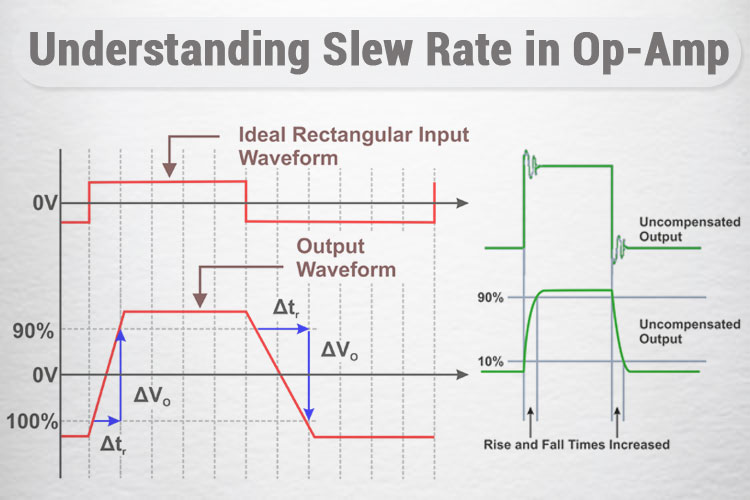FreshmanNewbie
Advanced Member level 1

I read that the slew rate of an op-amp the rate at which the output voltage changes with time with respect to a step change in input.
So my question is will the slew rate of an op-amp depend on external circuit components?
Suppose,
1. I have a capacitor at the output of an op-amp. In this case, the slew rate will not be the same as mentioned in the op-amp datasheet correct?
(I think that adding a capacitor at the output of an op-amp is not a good idea as its purpose is not to charge a capacitor or moreover I haven't seen a requirement where there would be a capacitor requirement at the output of the op-amp. Please correct me if I am wrong).
2. What impact would a diode create on the slew rate of the op-amp if it is placed at the output?
3. On what external factors does the slew rate of an op-amp depend upon?
So my question is will the slew rate of an op-amp depend on external circuit components?
Suppose,
1. I have a capacitor at the output of an op-amp. In this case, the slew rate will not be the same as mentioned in the op-amp datasheet correct?
(I think that adding a capacitor at the output of an op-amp is not a good idea as its purpose is not to charge a capacitor or moreover I haven't seen a requirement where there would be a capacitor requirement at the output of the op-amp. Please correct me if I am wrong).
2. What impact would a diode create on the slew rate of the op-amp if it is placed at the output?
3. On what external factors does the slew rate of an op-amp depend upon?

